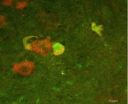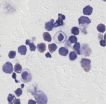(Press-News.org) Preventative treatment with a monthly dose of a newer antimalarial drug can reduce the risk of malarial infection among young children, according to a study published in this week's PLOS Medicine. The study, conducted by Victor Bigira and colleagues at San Francisco General Hospital and the Makerere University College of Health Sciences in Kampala, Uganda, finds that treating young children with dihydroartemisinin-piperaquine (DP) decreased their risk of contracting malaria.
Preventative treatment of malaria is a useful strategy to protect young children in Africa, but it is unclear which drug and dosing strategy is most effective, especially with the rise of resistance to a class of drug known as antifolates, such as sulfadoxine-pyrimethamine (SP) and trimethoprim-sulfamethoxozole (TS). In this randomized controlled trial, the authors compared three treatment regimens, monthly SP, daily TS, monthly DP (a newer artemisinin-based combination therapy), and a no treatment control. The study enrolled 393 infants from Tororo, Uganda, and treated them from 6 to 24 months of age. The authors found that the incidence of malaria among the children treated with DP was lower than those with no treatment, 3.02 vs 6.95 episodes per person year (a protective efficacy of 58%). The protective efficacies of SP and TS were lower (7% and 28%) than DP.
There was no significant increase in adverse events with any of the treatments over the control group, nor was there any difference in malaria incidence between groups during the one year period after the study treatment was stopped, suggesting that monthly administration of DP is a safe and effective treatment for reducing malaria among infants in regions with year-round transmission and high resistance to antifolates.
The authors say: "The excellent efficacy of DP for the treatment of malaria in multiple countries and for chemoprevention in our high transmission area suggest that this regimen will offer benefit in many regions in need of improved control measures."
They continue: "... future studies are needed to evaluate the preventive efficacy of DP in other areas, maintain surveillance for potential selection of drug-resistant parasites, and evaluate the role of chemoprevention in the context of other available malaria control interventions such as the scale up of [insecticide treated nets] and use of indoor residual spraying of insecticides."
INFORMATION:
Research Article
Funding: The study was funded by the National Institutes of Health (HD059454). Holley-Cotec provided the dihydroartemisinin-piperaquine. The funders had no role in study design, data collection and analysis, decision to publish, or preparation of the manuscript.
Competing Interests: The authors have declared that no competing interests exist.
Citation: Bigira V, Kapisi J, Clark TD, Kinara S, Mwangwa F, et al. (2014) Protective Efficacy and Safety of Three Antimalarial Regimens for the Prevention of Malaria in Young Ugandan Children: A Randomized Controlled Trial. PLoS Med 11(8): e1001689. doi:10.1371/journal.pmed.1001689
Author Affiliations:
Infectious Diseases Research Collaboration, UGANDA
San Francisco General Hospital, University of California San Francisco, UNITED STATES
Makerere University College of Health Sciences, UGANDA
Contact:
Grant Dorsey
University of California San Francisco
UNITED STATES
+1 (415) 206-4680
gdorsey@medsfgh.ucsf.edu
Monthly preventative treatment with a new drug combination reduces malaria in children
2014-08-05
ELSE PRESS RELEASES FROM THIS DATE:
Pregnant women are often given inappropriate treatment for malaria
2014-08-05
Not all pregnant women with symptoms of malaria seek care from their formal healthcare system and if they do seek care, they may be given inappropriate treatment because healthcare providers often fail to adhere to the standard (World Health Organization-WHO) diagnostic and treatment guidelines, according to a study by UK researchers published in this week's PLOS Medicine.
The authors (led by Jenny Hill from the Liverpool School of Tropical Medicine) reached these conclusions by reviewing all relevant studies that investigated the factors that affect pregnant women's ...
A campaign involving Muslim clerics has increased uptake of polio vaccination in Nigeria
2014-08-05
A coalition campaign involving imams, Islamic school teachers, traditional rulers, doctors, journalists, and polio survivors is gradually turning the tide against polio vaccine rejection in northern Nigeria, according to experts from Nigeria writing in this week's PLOS Medicine.
Sani-Gwarzo Nasir (from the Federal Ministry of Health in Nigeria) and colleagues describe how anti-polio propaganda, misconceptions, and violence against vaccinators present huge challenges to polio eradication in Nigeria but perhaps most profound is the rejection of vaccination by Muslim clerics.
However, ...
Just one simple question can identify narcissistic people
2014-08-05
COLUMBUS, Ohio – Scientists have developed and validated a new method to identify which people are narcissistic: just ask them.
In a series of 11 experiments involving more than 2,200 people of all ages, the researchers found they could reliably identify narcissistic people by asking them this exact question (including the note):
To what extent do you agree with this statement: "I am a narcissist." (Note: The word "narcissist" means egotistical, self-focused, and vain.)
Participants rated themselves on a scale of 1 (not very true of me) to 7 (very true of me).
(How ...
Salk scientists uncover new clues to repairing an injured spinal cord
2014-08-05
LA JOLLA—Frogs, dogs, whales, snails can all do it, but humans and primates can't. Regrow nerves after an injury, that is—while many animals have this ability, humans don't. But new research from the Salk Institute suggests that a small molecule may be able to convince damaged nerves to grow and effectively rewire circuits. Such a feat could eventually lead to therapies for the thousands of Americans with severe spinal cord injuries and paralysis.
"This research implies that we might be able to mimic neuronal repair processes that occur naturally in lower animals, which ...
Year-round preventive treatment reduces malaria risk in young children
2014-08-05
A year-round preventive drug treatment substantially reduces young children's risk of contracting malaria and poses no serious risk of adverse events, according to a study by researchers funded by the National Institutes of Health.
The findings demonstrate that prolonged treatment given from 6 to 24 months of age is safe and effective for young children, according to the study authors. Year-round preventive measures are badly needed in locations like Uganda, where the study took place, and where malaria rates remain high throughout the year.
Most previous studies using ...
How spiders spin silk
2014-08-05
Spider silk is an impressive material; lightweight and stretchy yet stronger than steel. But the challenge that spiders face to produce this substance is even more formidable. Silk proteins, called spidroins, must convert from a soluble form to solid fibers at ambient temperatures, with water as a solvent, and at high speed. How do spiders achieve this astounding feat? In new research publishing in the open access journal PLOS Biology on August 5, Anna Rising and Jan Johansson show how the silk formation process is regulated. The work was done at the Swedish University ...
In search for Alzheimer's drug, a major STEP forward
2014-08-05
Researchers at Yale School of Medicine have discovered a new drug compound that may help reverse the cognitive deficits of Alzheimer's disease. Their findings are publishing on August 5 in the open access journal PLOS Biology.
The compound, TC-2153, inhibits the negative effects of a protein called STriatal-Enriched tyrosine Phosphatase (STEP), which is key to regulating learning and memory. These cognitive functions are impaired in Alzheimer's.
"Decreasing STEP levels reversed the effects of Alzheimer's disease in mice," said lead author Paul Lombroso, M.D., professor ...
Pyruvate oxidation is critical determinant of pancreatic islet number and β-cell mass
2014-08-05
Researchers at the University at Buffalo, led by Dr. Mulchand Patel and also at Lawson Health Research Institute and Western Ontario, London, Canada, led by Dr. David Hill, collaboratively evaluated the role of the mitochondrial multienzyme pyruvate dehydrogenase complex in the regulation of pancreatic β-cell development and maturation in the immediate postnatal period in mice. This study, reported in the August 2014 issue of Experimental Biology and Medicine, demonstrated that the pyruvate dehydrogenase complex is not only required for insulin gene expression and ...
Butterflies change wing color in new Yale research
2014-08-05
Yale University scientists have chosen the most fleeting of mediums for their groundbreaking work on biomimicry: They've changed the color of butterfly wings.
In so doing, they produced the first structural color change in an animal by influencing evolution. The discovery may have implications for physicists and engineers trying to use evolutionary principles in the design of new materials and devices.
The research appears this week in the journal Proceedings of the National Academy of Sciences.
"What we did was to imagine a new target color for the wings of a butterfly, ...
Seamless gene correction of beta-thalassemia mutations in patient-specific cells
2014-08-05
August 5, 2014 – A major hurdle in gene therapy is the efficient integration of a corrected gene into a patient's genome without mutating off-target sites. In a paper published today in Genome Research, scientists have used CRISPR/Cas genome editing technology to seamlessly and efficiently correct disease-causing mutations in cells from patients with β-thalassemia.
β-thalassemia results from inherited DNA mutations in the hemoglobin beta (HBB) gene, resulting in reduced HBB expression in red blood cells and, in the most severe forms, anemia. The only established ...


